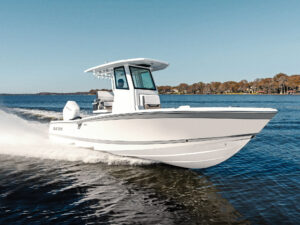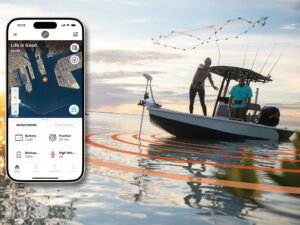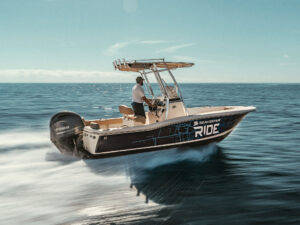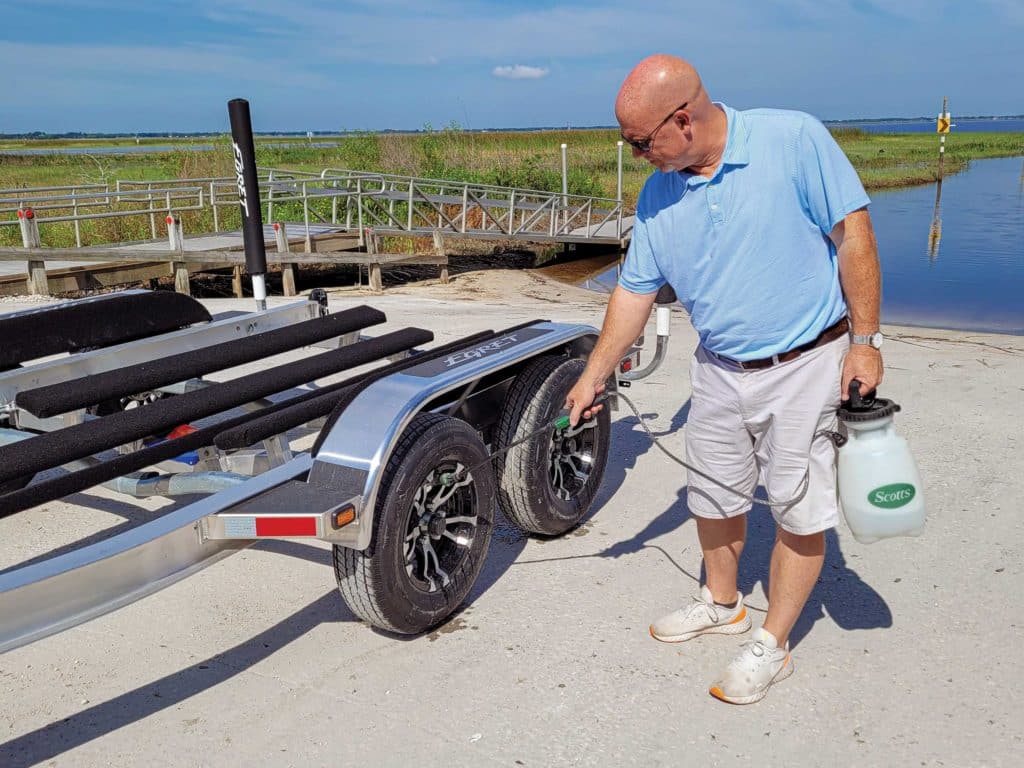
I‘ll admit my trailer gets less than its share of love. But unlike the sleek sheerline of a boat, a metal frame with wheels does not scream beauty. Pity. Trailers need attention too.
Anglers routinely dunk their trailer axles and wiring into corrosive salt water and travel hundreds of miles pulling heavy boats on diminutive tires. Big-boat trailers that feature brakes must stop 6 tons or more of fiberglass and engines from plowing into their tow vehicles.
To deliver the respect this equipment deserves, keep up with regular and seasonal maintenance and inspections. How much you must do depends upon how far and how often you trailer your boat.
Small skiffs and lighter bay boats generally pair with single- or dual-axle trailers. Heavier boats pair with dual- or triple-axle trailers. State law dictates which trailers must feature brakes. (Often 3,000 pounds of gross weight is the parameter.)
Charter captain Tommy Derringer, of Inshore Adventures in St. Augustine, Florida, runs several boats, including a Maverick 18 HPX and a Pathfinder 2300 HPS. The former rides on a single-axle trailer without brakes. The latter rides on a dual-axle trailer with brakes.
“The one thing I definitely do when I first get these trailers (and at least four times a year) is I look at all the electrical connections,” Derringer says, noting that he trailers his boats about 20 miles daily and occasionally for family trips. “I liquid-tape any splice in any wire to make sure they’re waterproof.”
Derringer says he also learned a valuable tip from a fellow guide: Buy a portable sprayer like the ones used to apply pesticide and fill it with water and a product like Salt Off. Spray your trailer right after you launch your boat, before you park it in the sun all day.
Tournament angler Mark Maus, who pulls his Yellowfin 36 on a triple-axle trailer, says he invested in an onboard wash system that features a small water tank and a 12-volt pump. Such systems are sold by some trailer manufacturers. Other anglers use products such as cordless electric pressure washers.
Because he drives about 35,000 miles a year to tournaments, Maus replaces his three sets of trailer tires on a rotating basis. Each year, he replaces one pair. (The recommended tire-change interval for more average travel is four to five years.) “Even if a tire looks great, it doesn’t matter. You can create so much heat [traveling] that they will separate. One thing you don’t scrimp on is trailer tires,” he says.
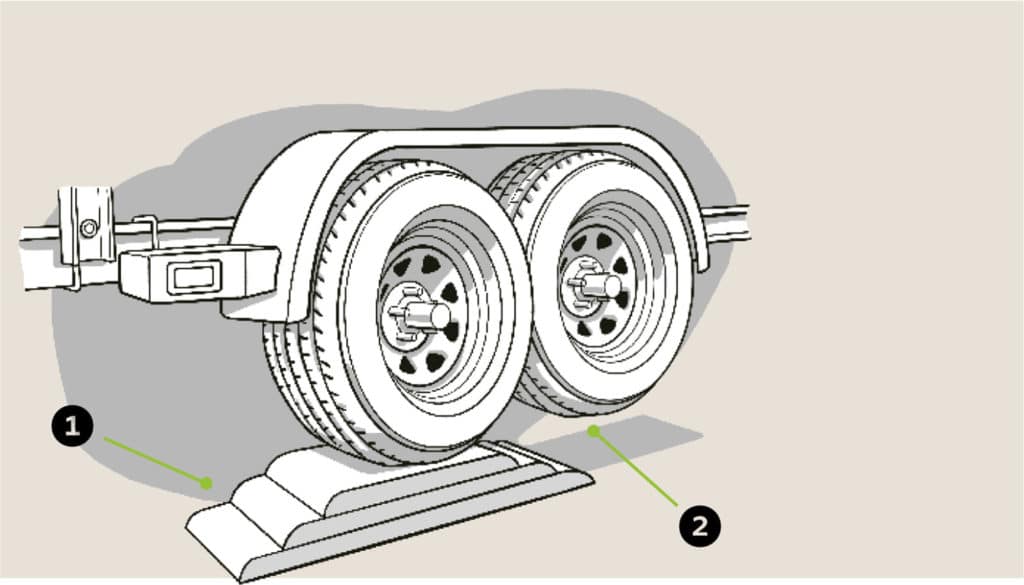
- A portable ramp helps elevate a tire without having to use a jack. Make a graduated ramp like this one from pieces of two-by-six lumber.
- Drive the trailer onto the ramp to lift the adjacent tire off the ground for easier changing or service.
Trailer-makers such as AmeraTrail suggest blocking and covering trailer tires during storage because rubber degrades when exposed to sunlight and rots when in contact with the ground.
Read Next: Protect Your Trailer From Salt Water
Maus also replaces his brake pads and repacks his wheel bearings once a year. If he makes a long run of several hundred miles, he gives the bearings five to eight squirts of grease before the return trip.
Maus’ list of gear to carry includes spare hubs, a grease gun, roadside triangles, a hydraulic jack, an electric impact wrench, a T-wrench, and a low ramp made from 12-inch two-by-six lumber. “I can pull a tire up on [the ramp], and it lifts the adjacent tire off the ground,” he says. “That way I don’t have to jack the trailer up to change a tire.”
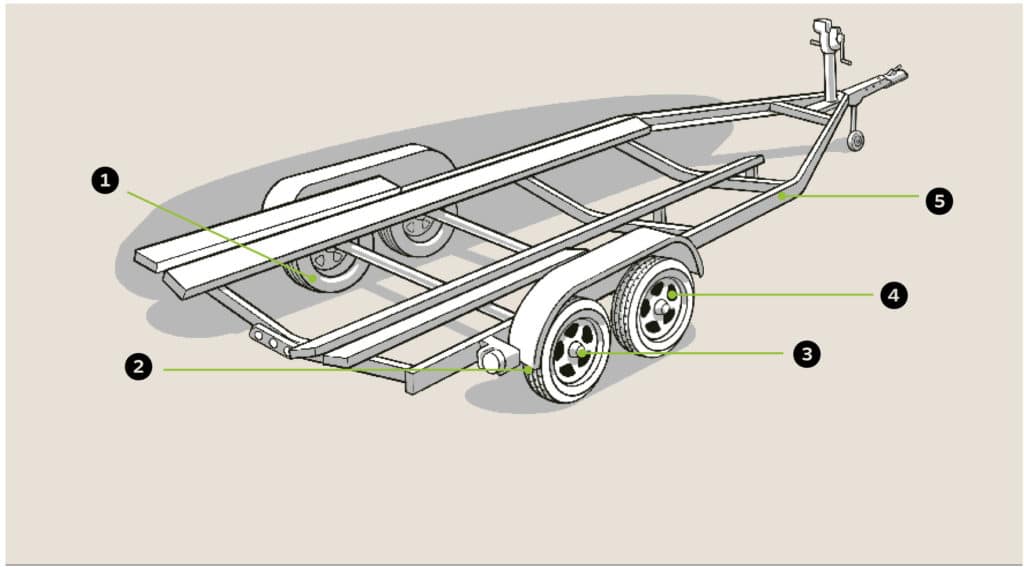
- Check tire pressure at least once a month. The correct psi should be on the tire sidewall. Keep an inexpensive air pump with an extension cord in your tow vehicle.
- Change brake pads every year. “People who don’t use their boats a lot don’t realize that those brakes can stop working,” Derringer says.
- Inspect and change or add grease to hubs as needed. “That’s a silent killer right there,” he says. “Depending on how much water has gotten into the bearings, or if they’ve just dried up, things start to seize up.”
- Check your wheel lug nuts for tightness. “Take them all the way off and put a little grease on them before you put them back.”
- Every six months, apply a ceramic-coating sealer to the aluminum.

